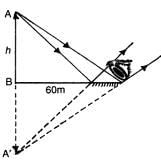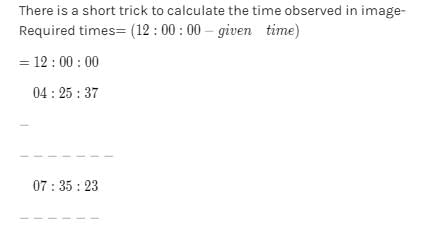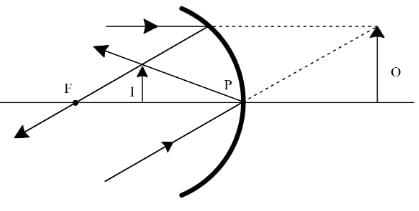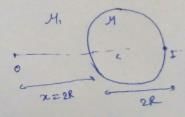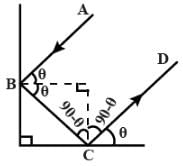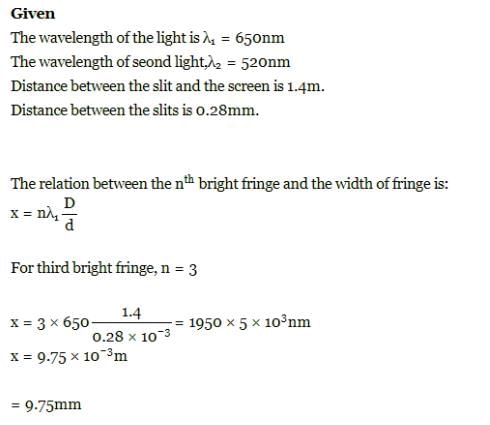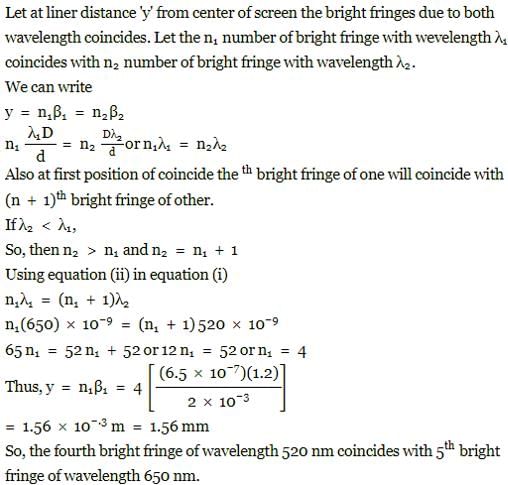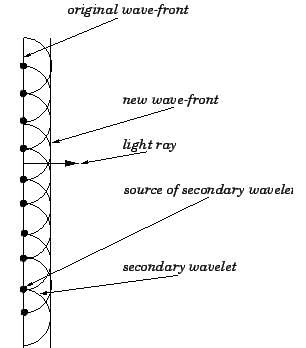Physics: Topic-wise Test- 7 - NEET MCQ
30 Questions MCQ Test - Physics: Topic-wise Test- 7
When a plane mirror AB is placed horizontally on level ground at a distance of 60 metres from the foot of a tower, the top of the tower and its image in the mirror subtends, an angle of 90° at B. The height of the tower is:
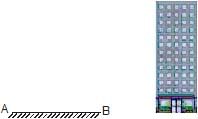
A unnumbered wall clock shows time 04 : 25 : 37, where 1st term represents hours, 2nd represents minutes & the last term represents seconds, What time will its image in a plane mirror show.
Variation of focal length to form a sharp image on retina is called
Which of the following cannot form real image of a real object ?
The radius of curvature of the left & right surface of the concave lens are 10 cm & 15 cm respectively. The radius of curvature of the mirror is 15 cm.
If a symmetrical biconcave thin lens is cut into two identical halves. They are placed in different ways as shown :
A transparent sphere of radius R and refractive index m. An object O is placed at a distance x from the pole of the first surface so that a real image is formed at the pole of the exactly opposite surface.
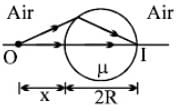
If x = 2R, then the value of m is
A transparent sphere of radius R and refractive index m. An object O is placed at a distance x from the pole of the first surface so that a real image is formed at the pole of the exactly opposite surface.
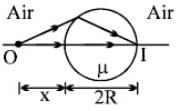
If an object is placed at a distance R from the pole of first surface, then the real image is formed at a distance R from the pole of the second surface. The refractive index m of the sphere is given by
Column -II shows the optical phenomenon that can be associated with optical components given in column-I. Note that column-I may have more than one matching options in column-II.

Statement-I : If a source of light is placed in front of rough wall its image is not seen.
Statement-II : The wall does not reflect light.
Statement-I : When an object dipped in a liquid is viewed normally, the distance between the image and the object is indepedent of the height of the liquid above the object.
Statement-II : The normal shift is independent of the location of the slab between the object and the observer.
Statement-I : When two plane mirrors are kept perpendicular to each other as shown ( O si the point object), 3 image will be formed.
Statement-II : In case of multiple reflection, image of one surface can act as an object for the next surface.
A rays is incident at an angle 38º on a mirror. The angle between normal and reflected ray is
An object is initially at a distance of 100 cm from a plane mirror. If the mirror approaches the object at a speed of 5 cm/s. Then after 6 s the distance between the object and its image will be
Two mirrors are placed perpendicular to each other. A ray strikes the first mirror and after reflection from the first mirror it falls on the second mirror. The ray after reflection from second mirror will emerge
A person is in a room whose ceiling and two adjacent walls are mirrors. How many images are formed?
If an object is placed unsymmetrically between two plane mirrors, inclined at the angle of 600, then the total number of images formed is
In image formation from spherical mirrors, only paraxial rays are considered because they
Shape of the wave front of light emerging out of a convex lens when a point source is placed at its focus.
A beam of light consisting of two wavelengths, 650 nm and 520 nm, is used to obtain interference fringes in a Young’s double-slit experiment. The distance between the slit and the screen is 1.4m and the distance between the slits is 0.28mm. Find the distance of the third bright fringe on the screen from the central maximum for wavelength 650 nm.
A beam of light consisting of two wavelengths, 650 nm and 520 nm, is used to obtain interference fringes in a Young’s double-slit experiment. What is the least distance from the central maximum where the bright fringes due to both the wavelengths coincide?
Shape of the wave front of portion of the wave front of light from a distant star intercepted by the Earth
Which of the following phenomenon cannot be explained by diffraction?
Estimate the distance for which ray optics is good approximation for an aperture of 4 mm and wavelength 400 nm.
The critical angle for total internal reflection at a liquid–air interface is 42.5∘ If a ray of light traveling in air has an angle of incidence at the interface of 35∘ what angle does the refracted ray in the liquid make with the normal?
According to Huygens construction relation between old and new wave fronts is


